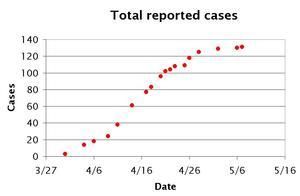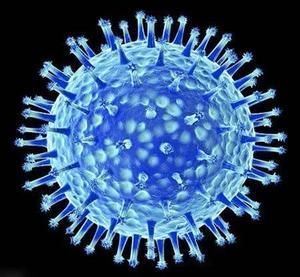Three of the deaths occurred in the eastern coastal provinces of Jiangsu and Zhejiang and one death occurred further inland at Anhui.
No details have emerged concerning the new victims.
In addition to recent deaths, the Chinese government is reporting two new confirmed H7N9 cases in the southeastern coastal province Fujian, located across the straits from Taiwan where the virus has infected one person who is said to be recovering.
Earlier this week, Dr. Thomas Frieden, director of the U.S. Centers for Disease Control and Prevention (CDC) said in an interview with Reuters the risk of a widespread H7N9 pandemic remains low: "This particular virus is not going to cause a pandemic because it doesn't spread person-to-person."

Early March, 2013 - First victims infected with H7N9 flu virus
March 31, 2013 - Three confirmed cases of H7N9 reported by the Chinese National Health and Family Planning Commission. Two men from Shanghai, ages 87 and 27, died while a third female patient in Anhui was in critical condition
April 2, 2013 - H7N9 infections reported in Jiangsu province, adjacent to Shanghai and Anhui, bringing the total number of infections to seven.
April 3, 2013 - Third death from H7N9 confirmed in Jiangsu.
April 4, 2013 - Death toll rises to five with 14 confirmed cases, all in eastern China.
April 5, 2013 - A farmer in Huzhou, a suburb of Shanghai in Zhejiang province, dies from H7N9, raising the death toll to six and total confirmed cases to 18. Shanghai closes poultry markets.
April 9, 2013 - The WHO reports a seventh fatality with 24 confirmed cases, 14 of them severe.
April 11, 2013 - 38 confirmed cases of H7N9, 10 deaths, reported by Xinhua.
April 13, 2013 - Beijing reports first H7N9 infection.
April 14, 2013 - Two confirmed cases in Henan, an province of roughly 90 million people located 600 miles inland from Shanghai. Total number of infections stands at 51 with 11 reported deaths.
April 24, 2013 -- Taiwan reports first confirmed case of H7N9, a 53-year-old businessman recently returned from Shanghai.
April 25, 2013 - China's National Health and Family Planning Commission confirms 109 H7N9 cases, 23 deaths.
April 29, 2013 - First reported cases in Shandong, a coastal province south of Beijing, and Jiangxi, an inland province west of Shanghai. The WHO confirms 126 infections, 24 deaths.
May 2, 2013 - Total number of confirmed infections rises to 128, with 27 reported fatalities.
May 6, 2013 - Chinese health officials announce four more H7N9 fatalities, pushing the number killed to 31, with 129 infections.




The WHO loves a good panic.... er I mean pandemic. If they can't find one, they''ll have to make one up.